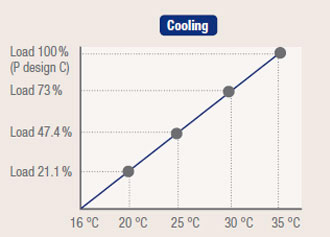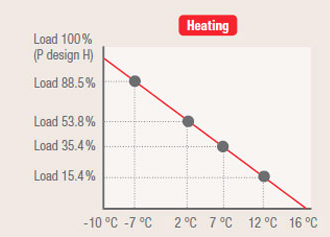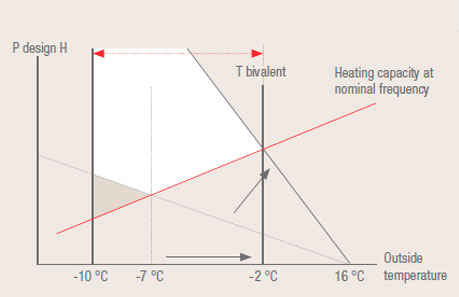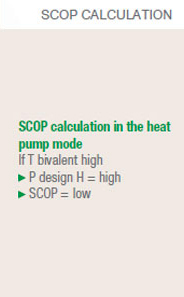The new CE label
New on the scene
The ErP directive provides for changes in the classification of the individual energy efficiency classes. In addition, the scale of values will be expanded to include three new classes: A +, A ++ and A +++.
These changes are based on a redefinition of the measurement points and on the calculation of SEER and SCOP and thus involve the classification of energy efficiency classes for those air-conditioning systems that will be sold without undergoing changes of a technical nature.
This is something that planning and construction specialists will have to pay particular attention to: even if they have always used the same air-conditioning systems for a long time, their class of efficiency could change from 1 January 2013.
Moreover, in cooling mode, the air-conditioning systems must at least meet the requirements of energy efficiency class D from 1 January 2013 and the energy efficiency class B one year after that. For the heating mode, class A will immediately represent the minimum classification for the mid season.


The new seasonal measurement procedure for the cooling and heating modes take into consideration the following aspects: four seasons, three climatic zones in the EU for the heating mode, part- load operation, consumption with thermostat off, standby power consumption and oil heater and thus evaluates energy efficiency in the context of an average realistic use of a split air-conditioning system.
The new parameters: SEER and SCOP
To date air-conditioning systems have been evaluated using EER and COP.
The EER ratio evaluated the efficiency in cooling mode.
The COP ratio defined the efficiency (i.e. the ratio between power consumption and power output) in heating mode.
Until now, these values were oriented exclusively towards a single point of operation.
This meant that producers would only optimise units with reference to this operating point and, with regard to the overall performance of the product, they were able to obtain a class of energy efficiency that could not be justified by the technical components of the air-conditioning unit.
SEER and SCOP are addressing this problem, as the "S" stands for "Seasonal" and thus means that many of the realistic measurement points are defined that in their entirety contribute to the classification in the relevant energy efficiency class.
For the cooling mode, the measurement points were defined at an external temperature of 20°C, 25°C, 30°C and 35°C.
For the cooling mode the climate data of Strasbourg was used for the whole of Europe.
The individual points of measurement were evaluated in a different manner, based on changes in temperature in Strasbourg.
For example, the part-load operation of an air-conditioning system which represents more than 90% of the operation has a higher weight with regard to the classification in the corresponding energy efficiency class.
For the heating mode, it was not possible to create a single temperature profile for the whole of Europe.
For this reason, three climatic zones were defined in the EU (northern Europe, central Europe and southern Europe) for which different load profiles were defined. The measurement points are all homogeneous with an external temperature of 12°C, 7°C, 2°C and -7°C.


Technical terms in reference to SCOP
P design H: corresponds to a heating load of 100%. The value depends on the point of bivalence selected.
T design: external temperature that determines the PdesignH point. The latter is determined by the conditions of the area.
T bivalent: Corresponds to the lowest temperature at which it is possible to reach the level of maximum yield with the heat pump (without using an additional heater). This point can be freely selected within the set temperature range (T design - T bivalent).

